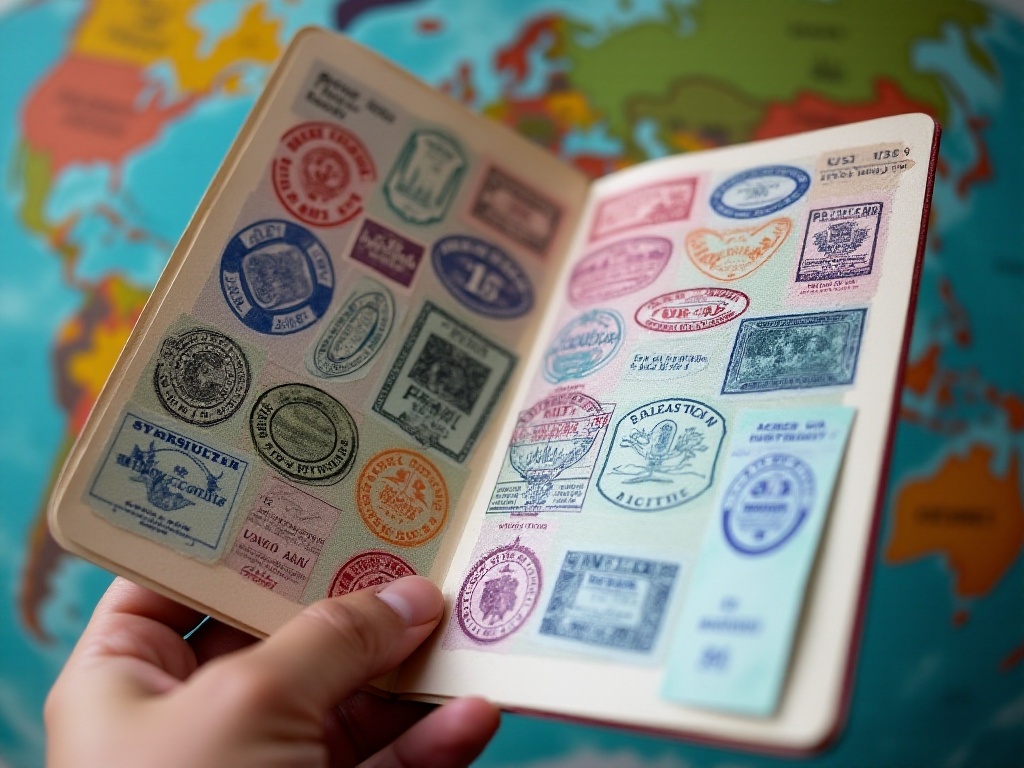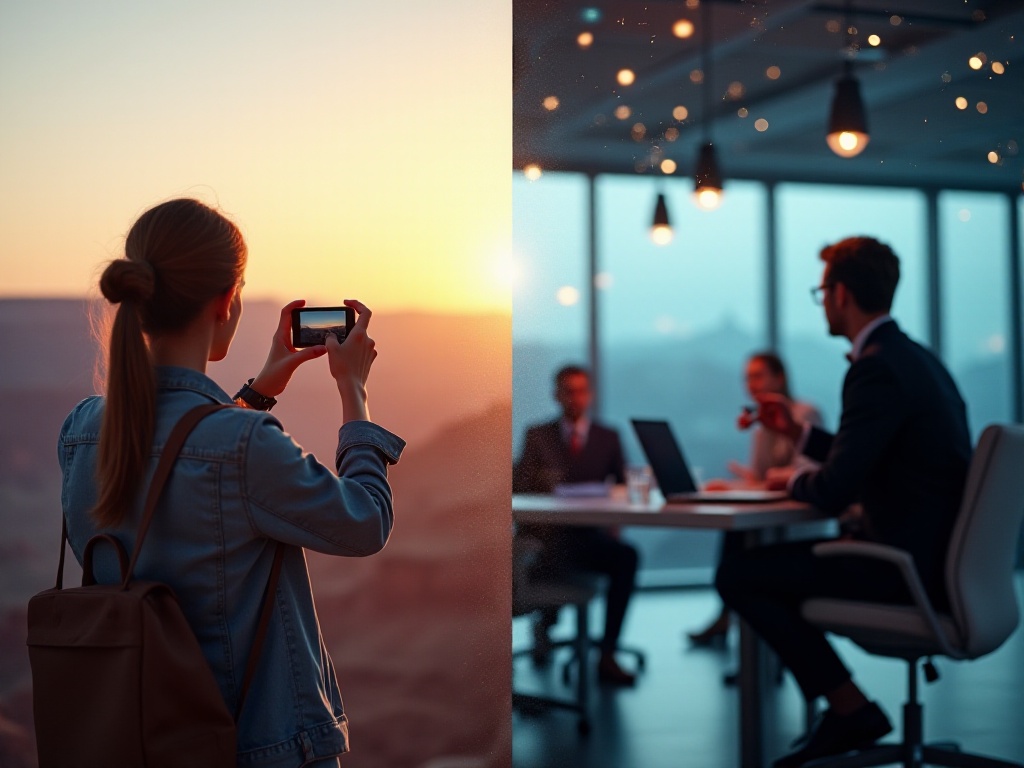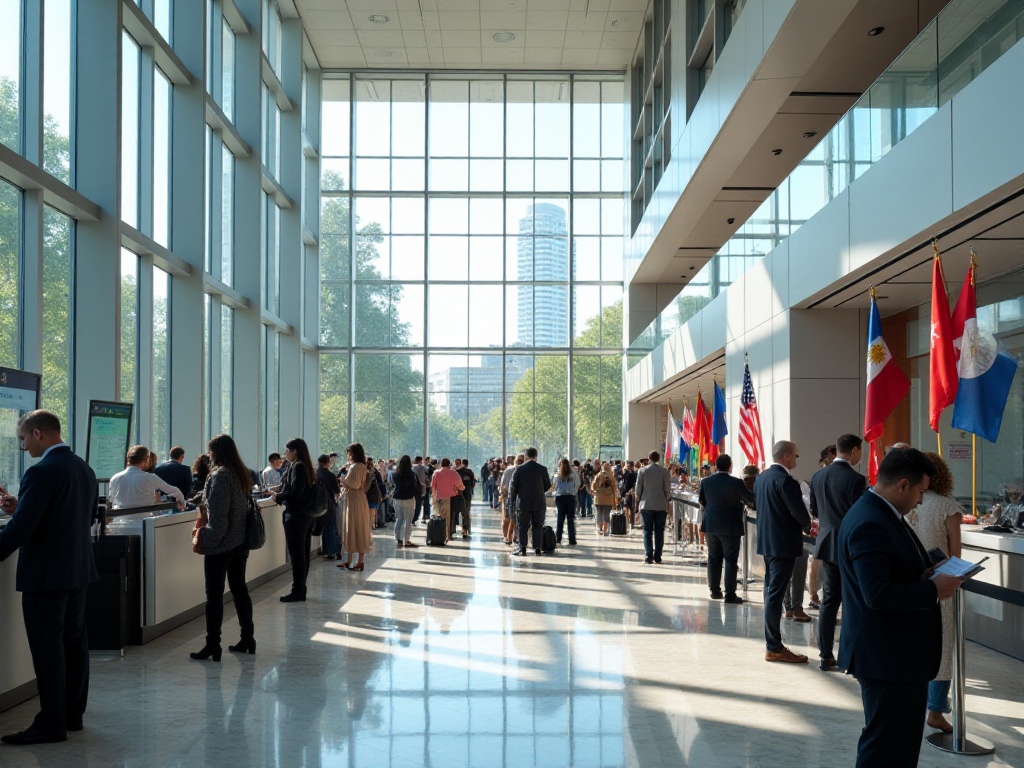Introduction
As someone who just received a U.S. visa, I really want to have a good discussion about this topic with everyone. Honestly, before I applied, I was also confused, constantly browsing Xiaohongshu and Bilibili, feeling overwhelmed by all the information. Some say getting a U.S. visa is extremely difficult, while others say it's actually quite simple. These different opinions really confused me. But after going through the entire application process, I feel that sharing these experiences should help more young people like me.
Visa Basics
Let's start with what a visa is. You can think of it as a pass, just like buying a ticket to enter an amusement park. Except this "ticket" is issued by the U.S. government, and it determines whether you can enter the United States.
U.S. tourist visas mainly come in two types: B-1 for business and B-2 for tourism. The great thing is that consulates usually give you a B-1/B-2 combination visa. It's like getting a combo ticket - you can visit for both business and tourism, what a deal! Plus, it's usually valid for 10 years, meaning you won't need to reapply for visits to the U.S. during that period.
For example, when I applied, the visa officer gave me a B-1/B-2 combination visa. This means I can attend a business meeting in New York and then enjoy Universal Studios on the weekend - how awesome is that!

What You Can Do
There's so much you can do with a visa! First, you can visit various popular attractions. For instance, you can experience the magic of Mickey and Minnie at Disney, explore the wizarding world at Universal Studios, or marvel at the Grand Canyon's natural wonders.
Great news for shopping enthusiasts! You can go on shopping sprees at outlets, experience the luxury of Fifth Avenue, or visit the Apple headquarters store. Many products are cheaper in the U.S. than in China, especially limited editions - it's a great deal!
If you have friends or family studying or working in the U.S., you can visit them. I have a close friend studying for her master's in Boston who often tells me she wants me to visit and bring her some snacks from home.
You can also attend various professional conferences or exhibitions. For instance, I know friends who attended CES (Consumer Electronics Show) in Las Vegas and saw lots of amazing new technology.
Medical tourism is also possible. The U.S. has advanced medical technology, and many people go there for health checkups or treatment. However, remember to contact hospitals and make doctor appointments in advance.
But note that some activities are absolutely forbidden. Most importantly: you cannot work for pay! This principle must be remembered. I know some people think about getting a summer job in the U.S., but that's absolutely not allowed. Also, you can't formally enroll in classes or participate in paid performances or competitions.

Application Guide
Let's talk about the application process. Honestly, it's not as complicated as many say, but also not as simple as others suggest. Let me explain in detail.
First is the document preparation stage. Basic materials needed include: passport (valid for over 6 months), visa photo (requirements are strict, recommend getting it taken at a professional studio), and DS-160 form. The DS-160 form is filled out online and is quite time-consuming because there are many questions, all in English. It took me nearly two hours to complete.
I recommend setting aside a weekend to fill out this form, and prepare the following information in advance: - Passport information - Educational history - Work history - Family member information - Countries visited in the past five years - U.S. contact information (if any)
Be very careful when filling out the form, as visa officers can see this information during the interview. Don't think you can fill it out casually; ensure every piece of information is accurate.
Besides basic materials, I recommend preparing some supporting documents. Such as: - Employment certificate (must be in English) - Proof of assets (bank statements, property certificates, etc.) - Social security records - Travel itinerary - Round-trip flight reservations - Hotel reservations
While these materials aren't mandatory, they can help better prove your travel purpose and intention to return.
Then comes the interview appointment. This step really tests your patience because wait times are very long now. When I made my appointment in Beijing, I waited about 8 months for the interview. So I advise everyone to plan ahead, don't wait until you need the visa to start applying.
When scheduling the interview, pay attention to choosing the right consulate. There are U.S. consulates in Beijing, Shanghai, Guangzhou, Chengdu, and Shenyang, but wait times and approval rates may vary. I suggest monitoring the wait times at different consulates and choosing one with a relatively shorter wait.
Finally, the interview day. Honestly, I was very nervous. But after going through it, I found it wasn't as scary as imagined. The visa officers are professional, and the questions are standard. I was asked: - Why are you going to the U.S.? - How long do you plan to stay? - Where do you work? - What's your salary?
The whole process might take just 2-3 minutes, very quick. So don't be too nervous, just stay natural.

Visa Strategy
Many people are confused: why do some people easily get visas while others are rejected despite thorough preparation? This is indeed a question worth discussing in depth.
From my observation and experience, U.S. visa officers mainly focus on two aspects: ties to home country and financial capability.
Regarding ties to home country, simply put, you need to prove your life in China is stable enough that you won't overstay in the U.S. How to prove this? For example: - Have a stable job, preferably at a large company or established enterprise - Own property, especially if still paying a mortgage - Have family, such as being married with children - Have a stable social network
These are all good proof of ties to home country. I personally succeeded in convincing the visa officer with my stable job at an internet company plus my mortgaged house.
Financial capability is also important. Visa officers need to ensure you can afford travel expenses in the U.S. and won't work illegally. Generally, prepare: - Last 6 months' bank statements - Salary statements - Fixed asset proof - Investment certificates
But note, more money isn't always better. The key is whether the source of funds is reasonable and if the cash flow is stable. A sudden large sum in your account might raise suspicions.

Practical Tips
Based on my application experience, I've summarized some practical tips that I hope will help everyone:
First, regarding time planning. Applying for a U.S. visa now requires very early preparation. I suggest starting at least 8-12 months in advance, as just the wait for an interview could take over half a year. Plus, document preparation takes time, like accumulating 6 months of bank statements, waiting for company approval for employment certificates, etc.
Second, about document preparation. Many think more documents are better, but that's not true. Documents should be concise but powerful, focusing on showing your stability and financial capability. For example, rather than preparing a pile of low-value certificates, better prepare a detailed employment certificate and complete bank statements.
Interview attire is also a concern for many. I suggest dressing appropriately but not too formal or too casual. Men can wear a shirt and casual pants, women can wear a simple dress or business suit. The key is to appear reliable and stable.
Interview answering techniques are also important. Remember to: - Answer concisely, don't ramble - Stay natural, neither too humble nor too proud - Ask the visa officer to repeat if you don't hear clearly - You can speak Chinese if you don't know English, consulates have interpreters
Also, don't think being rejected is the end of the world. Many people I know succeeded on their second or even third try. If rejected, calmly analyze the reason, adjust strategy, and try again.

Conclusion
Through my personal experience and this detailed sharing, I believe everyone now has a clearer understanding of the U.S. visa application process. Actually, getting a U.S. visa isn't that mysterious or scary. As long as you meet the basic requirements, prepare thoroughly, and stay calm, getting a visa isn't that difficult.
Everyone's situation is different and may face different problems and challenges. But if you maintain a good attitude and prepare well, I believe you can also successfully get your visa and realize your dream of traveling to the U.S.!
Remember, throughout the application process, the most important thing is to stay genuine and natural. Whether preparing documents or interviewing, stick to the principle of being truthful. After all, a hard-earned visa makes your U.S. trip more meaningful, right?


